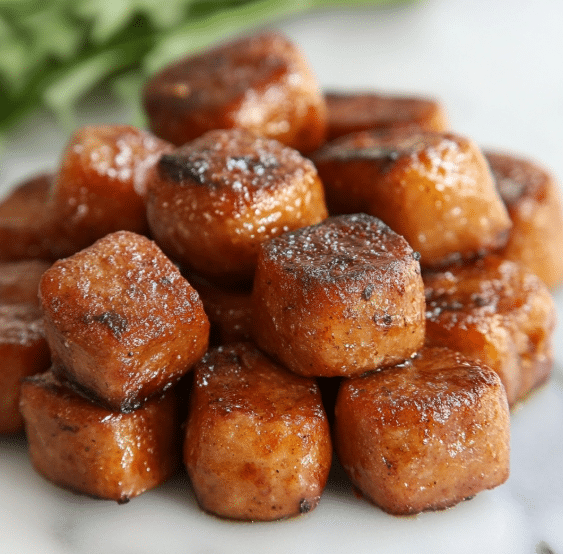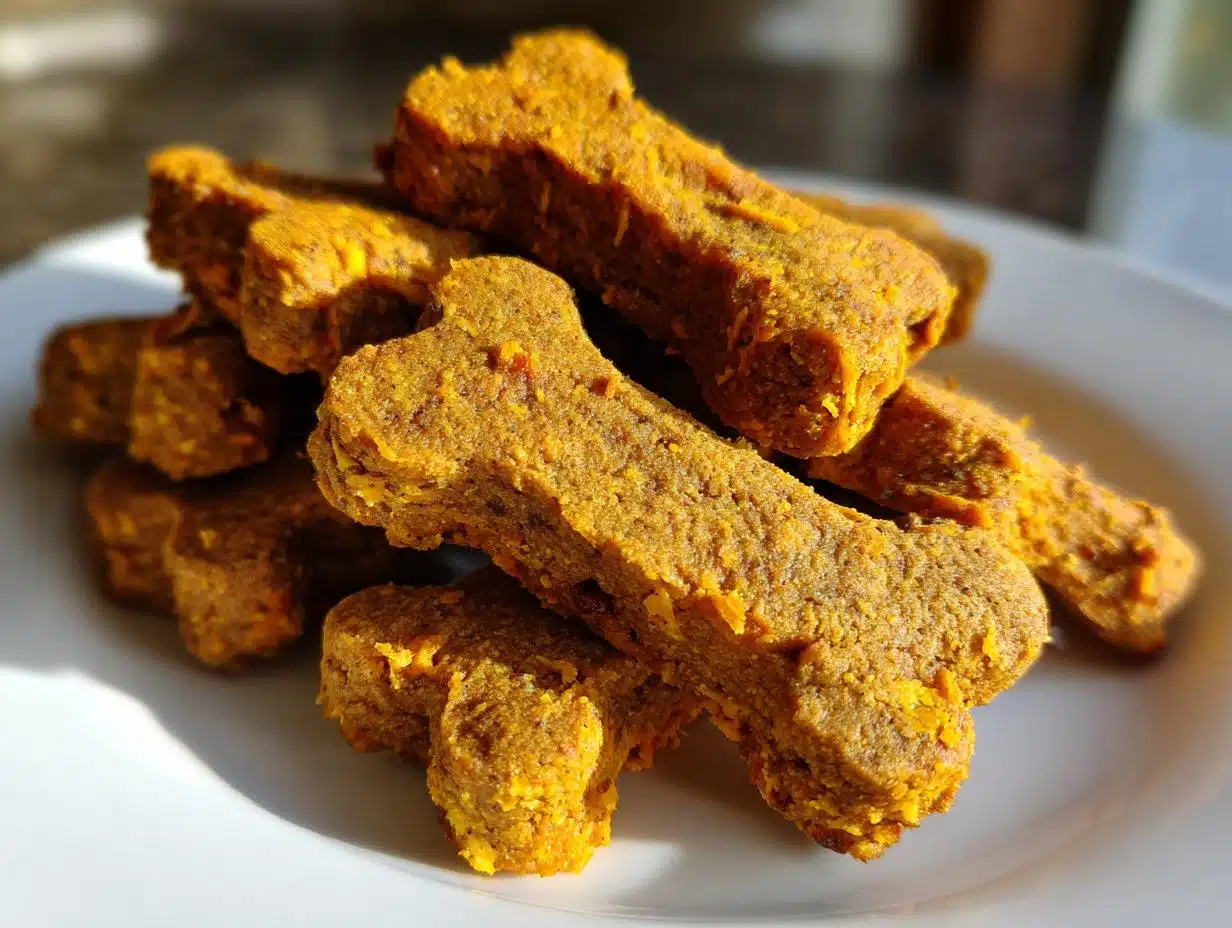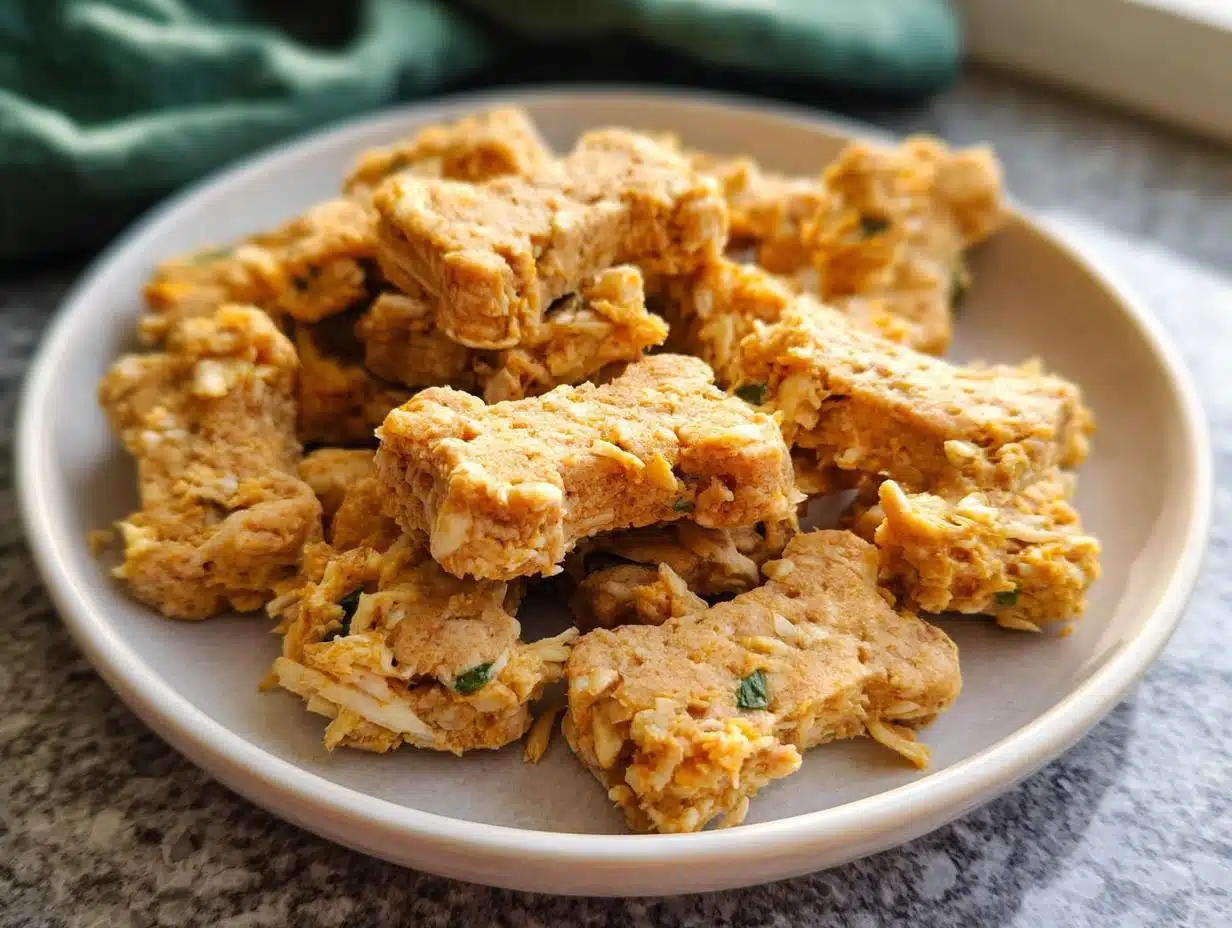Dogs are more than just pets—they’re family. And just like any loved one, they deserve treats that are both tasty and good for their health. In this guide, we dive deep into meaty dog treats—exploring their benefits, types, safety concerns, and how to make them right in your kitchen. Whether you’re a seasoned pet parent or new to the dog-loving world, this guide is packed with useful info, expert insights, and homemade recipe tips to keep your pup healthy and tail-wagging happy.
Check out this homemade meaty favorite: Homemade Beef Dog Food Recipes: Nutritious, Safe & Tail-Wagging Meals
Table of Contents
PART 1: Understanding Meaty Dog Treats
What Are Meaty Dog Treats?
Meaty dog treats are snacks made primarily from animal proteins like beef, chicken, turkey, lamb, or even organ meats. These treats range from soft chews to crunchy jerky-style strips. Unlike plant-based snacks, they appeal to your dog’s natural cravings and provide rich nutrients needed for strong muscles and overall health.
- Definition and Types of Meaty Treats
Meaty treats can be commercial, freeze-dried, dehydrated, or homemade. The most common include beef liver bites, chicken strips, lamb meatballs, and meaty bones. - Difference Between Meaty and Regular Dog Treats
While regular treats often include grains, fillers, or artificial ingredients, meaty treats focus on pure protein content. They’re higher in taste appeal and typically more nutritious, making them ideal for training or rewarding.
Nutritional Value in Meaty Dog Treats
Dogs are omnivores but thrive on protein. That’s where meaty treats shine. They deliver not just taste, but key vitamins and minerals essential for your dog’s well-being.
- Key Nutrients Found in Meat-Based Treats
Rich in amino acids, B vitamins (especially B12), iron, and zinc—meaty treats help support muscle growth, coat health, and a stronger immune system. - How They Fit Into a Balanced Dog Diet
While not a replacement for full meals, meaty treats supplement your dog’s nutrition. Limit them to 10% of daily caloric intake, and choose treats made with real, minimally processed meat.
PART 2: Health Benefits of Meaty Dog Treats
Protein-Rich Energy Source for Dogs
Protein is a powerhouse nutrient for dogs. Meaty dog treats are packed with high-quality protein that helps your pup build and maintain lean muscle. Whether your dog is a lazy couch lover or a ball-chasing machine, protein from real meat ensures they stay active and strong.
- How Protein Supports Muscle Development and Energy
Protein fuels your dog’s body with the amino acids needed to grow, heal, and energize. Dogs, especially growing puppies or active breeds, benefit greatly from meaty treats packed with animal protein. - Best Meats for Optimal Protein Intake
Beef, chicken, turkey, and lamb rank as the most digestible, nutrient-rich meats for dogs. Organ meats like liver and kidney are superfoods in disguise—loaded with essential vitamins.
Skin, Coat, and Immune System Support
If your dog suffers from dull fur or itchy skin, meat-based treats could help. These snacks often contain omega-6 fatty acids, zinc, and vitamin E, all essential for skin health and immune function.
- Vitamins in Meaty Treats That Promote Skin & Fur Health
Treats made with fatty meats like salmon or beef liver provide natural oils and nutrients that make your dog’s coat shiny and soft. - Boosting Immunity with Natural Nutrients
Zinc and iron found in meat help regulate immune responses, making your dog less prone to infections and illnesses.
Discover great ideas like Sweet Potato and Oatmeal Dog Cake: A Nutritious Homemade Treat to supplement meaty snacks with healthy carbs.
PART 3: Choosing the Best Meaty Dog Treats
Key Ingredients to Look For
Not all dog treats are created equal. To give your furry friend the best, scan the label before you buy.
- Real Meat as the First Ingredient
Look for named meats like “chicken,” “beef,” or “lamb” listed first. Avoid vague terms like “meat by-products” or “animal digest.” - Avoid Harmful Additives and Preservatives
Treats with artificial flavors, colors, or BHA/BHT preservatives should be avoided. Stick to natural, single-ingredient treats when possible.
Types of Meaty Dog Treats Available
Meaty treats come in various textures and preparation methods—each with their own pros and cons.
- Dehydrated and Freeze-Dried Meaty Treats
These have a long shelf life and retain most nutrients. Freeze-dried liver bites are especially popular for training. - Cooked or Raw Treats (Pros and Cons)
Cooked treats are safer for most dogs and easier to digest. Raw bones or meat must be handled carefully to prevent contamination.
Check out this creative meat-filled idea: Apple and Cheese Dog Bone Pizza – The Perfect Homemade Treat
PART 4: Are Meaty Bones and Chews Safe for Dogs?
Understanding the Risks of Meaty Bones
Meaty bones might seem natural, but not all are safe. Raw bones can carry bacteria, and cooked bones can splinter.
- Raw vs. Cooked Bones: What’s Safer?
Raw meaty bones like beef knuckles are generally safer as they don’t splinter. Cooked bones, especially chicken, can break into sharp fragments. - Bone Size Matters
Small bones can choke your pup or cause blockages. Always choose bones appropriate to your dog’s size and chewing behavior.
Healthy Alternatives to Meaty Bones
If you’re not comfortable with real bones, plenty of safe options exist.
- Synthetic Meaty-Flavored Chews
Look for vet-approved chews made with natural meat flavoring and safe dental materials. - Homemade Meaty Chews
You can dehydrate your own beef jerky for dogs or make meaty meatballs using lean ground meat and oats.
Looking for inspiration? Try Apple & Carrot Hard Bones – The Healthy, Crunchy Treat Your Pup Deserves
PART 5: How to Make Homemade Meaty Dog Treats
Benefits of DIY Meaty Treats
Making your own meaty treats puts you in control. You get to skip preservatives and add ingredients your dog loves.
- Cost-Effective and Customizable
Homemade treats cost less per serving and can be tailored for allergies or picky eaters. - Healthier Than Store-Bought
You avoid fillers, coloring agents, and chemical additives by using pure, fresh meat and simple binders.
Simple Recipes for Meaty Dog Treats at Home
Here are two easy recipes to get started:
| Recipe | Ingredients | Instructions |
|---|---|---|
| Beef Liver Bites | 1 lb beef liver, 1 egg, 1 cup oat flour | Blend all, bake at 350°F for 25 mins, cut into squares |
| Chicken & Sweet Potato Jerky | 2 chicken breasts, 1 sweet potato | Slice thin, bake at 200°F for 2-3 hrs until chewy |
Don’t miss our roundup of beef-packed meals: Homemade Beef Dog Food Recipes: Nutritious, Safe & Tail-Wagging Meals
PART 6: When and How Often to Give Meaty Treats
Treat Frequency Based on Dog Size and Activity
Not all dogs have the same nutritional needs. Giving too many treats—even healthy ones—can lead to weight gain or dietary imbalance.
- Small Dogs vs. Large Dogs
Smaller breeds should receive smaller portions and fewer treats per day. For instance, a 10-lb dog might only need 1–2 small meaty treats daily, while a 70-lb dog could handle more. - Active Dogs vs. Sedentary Dogs
Working breeds or high-energy dogs burn more calories, so they can handle additional meaty treats during training or play sessions.
Incorporating Treats Into a Healthy Feeding Routine
Treats should never replace meals but rather complement them.
- Rule of 10%
Treats should make up no more than 10% of your dog’s daily caloric intake. This helps avoid overfeeding and keeps your dog’s main meals nutritionally balanced. - Training & Positive Reinforcement Timing
The best time to give a meaty treat? During training or right after good behavior. This strengthens the association between action and reward.
PART 7: Common Concerns About Meaty Treats
Are All Meats Safe for Dogs?
While dogs love meat, not every type is safe. It’s important to know which meats to avoid.
- Safe Meats
Chicken, beef, turkey, lamb, and salmon are generally safe and easy to digest. - Unsafe Meats
Avoid processed meats like bacon, sausage, or cured deli meats. High salt and fat content can lead to pancreatitis or kidney issues.
Do Meaty Treats Contain Allergens?
Just like humans, dogs can have food sensitivities.
- Most Common Meat Allergens
Surprisingly, chicken and beef are among the top allergens in dogs. If your pup scratches after eating treats, consult your vet and try a limited-ingredient option. - Grain-Free vs. Meat-Based Doesn’t Mean Allergy-Free
Many assume grain-free equals safe. But if the issue is meat-based, switching proteins (like from beef to duck) is more effective.
PART 8: Buying Tips – What to Watch for in Store-Bought Meaty Dog Treats
Reading Labels the Right Way
Product packaging can be misleading. Don’t fall for marketing hype—look at the ingredient list.
- Look for First-Ingredient Meat
Ensure the first item listed is real meat, not “meat meal” or “by-product.” - Avoid Fillers and Artificial Additives
Steer clear of products with corn, wheat, soy, artificial colors, and chemical preservatives like BHA or propylene glycol.
Top Trusted Brands for Meaty Dog Treats
While homemade is best, some commercial options pass the test.
- Brands with Quality Ingredients
Look for companies that use human-grade meat, minimal ingredients, and transparent sourcing. - Budget vs. Premium
You don’t need to splurge. Many mid-range brands offer freeze-dried liver or jerky with zero fillers and high safety standards.
PART 9: Storing and Preserving Meaty Dog Treats
How to Store Store-Bought Treats
Once opened, treats must be stored properly to keep them fresh and safe.
- Use Airtight Containers
Reseal bags tightly or transfer to airtight glass jars to prevent moisture and mold. - Shelf Life Tips
Check the “Best By” date and store in a cool, dry area. If the treat smells off, discard it immediately.
Preserving Homemade Meaty Treats
Homemade treats don’t have preservatives, so shelf life is shorter—but they’re worth it!
- Refrigerate or Freeze for Longevity
Store in the fridge for up to 5 days. For longer storage, freeze in batches and thaw as needed. - Use Natural Preservatives
You can extend shelf life naturally using coconut oil, rosemary extract, or vacuum-sealed storage.
Learn more about making healthy meals at home: Homemade Beef Dog Food Recipes: Nutritious, Safe & Tail-Wagging Meals
FAQs About Meaty Dog Treats
Are meaty treats good for dogs?
Yes, meaty dog treats are generally good for dogs when given in moderation. They provide high-quality protein, essential vitamins, and a flavor dogs love. Choose treats made with real meat and without harmful additives.
What is the best meat treat for dogs?
The best meat treat depends on your dog’s preferences and sensitivities. Beef liver, chicken jerky, and turkey meatballs are among the top choices due to their high protein content and digestibility.
Are meaty bones safe for dogs?
Raw meaty bones can be safe if chosen and supervised properly. Cooked bones should always be avoided as they can splinter and cause choking or internal injury. Always match bone size with your dog’s chewing power.
Do dog treats have meat?
Not all dog treats contain real meat. Some are plant-based or use meat flavoring. Always check the ingredient list to ensure meat is the first ingredient if you’re looking for a genuine meaty treat.
Is all meat ok for dogs?
No. While many meats are dog-safe, avoid seasoned, processed, or fatty meats like bacon, sausage, and deli meats. Always serve plain, cooked or dehydrated meat with no spices, onions, or garlic.
Conclusion
Meaty dog treats are more than just tasty snacks—they’re nutrient-dense rewards that support your dog’s health, happiness, and training success. Whether you buy high-quality commercial options or make your own at home, your dog will thank you with every wag. Just remember: moderation, ingredient quality, and safety matter most.
Don’t miss our helpful guide to homemade meat-forward dog treats: Apple and Cheese Dog Bone Pizza – The Perfect Homemade Treat









